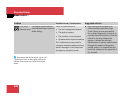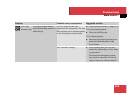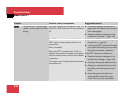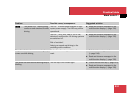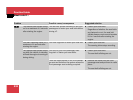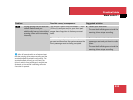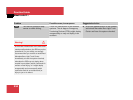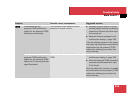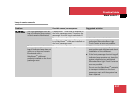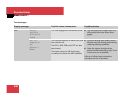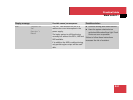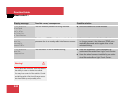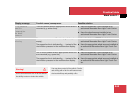
336
Practical hints
What to do if …
Warning! G
Each tire, including the spare (if provided),
should be checked monthly when cold and
inflated to the inflation pressure recom-
mended by the vehicle manufacturer on the
Tire and Loading Information placard on the
driver’s door B-pillar or, if available, the tire
inflation pressure label on the inside of the
fuel filler flap. If your vehicle has tires of a
different size than the size indicated on the
Tire and Loading Information placard or the
tire inflation pressure label, you should
determine the proper tire inflation pressure
for those tires.
As an added safety feature, your vehicle has
been equipped with a Advanced Tire Pres-
sure Monitoring System (Advanced TPMS)
that illuminates a low tire pressure telltale
when one or more of your tires is signifi-
cantly underinflated. Accordingly, when the
low tire pressure telltale illuminates, you
should stop and check your tires as soon as
possible, and inflate them to the proper
pressure.
Driving on a significantly underinflated tire
causes the tire to overheat and can lead to
tire failure.
Underinflation also reduces fuel efficiency
and tire tread life, and may affect the vehi-
cle’s handling and stopping ability. Please
note that the Advanced TPMS is not a sub-
stitute for proper tire maintenance, and it is
the driver’s responsibility to maintain cor-
rect tire pressure, even if underinflation has
not reached the level to trigger illumination
of the Advanced TPMS low tire pressure tell-
tale.
USA only: Your vehicle has also been
equipped with a Advanced TPMS malfunc-
tion indicator to indicate when the system is
not operating properly. The Advanced TPMS
malfunction indicator is combined with the
low tire pressure telltale. When the system
detects a malfunction, the telltale will flash
for approximately 1 minute and then remain
continuously illuminated. This sequence will
continue upon subsequent vehicle start-ups
as long as the malfunction exists.
When the malfunction indicator is
illuminated, the system may not be able to
detect or signal low tire pressure as
intended.
Advanced TPMS malfunctions may occur for
a variety of reasons, including the installa-
tion of replacement or alternate tires or
wheels on the vehicle that prevent the Ad-
vanced TPMS from functioning properly. Al-
ways check the Advanced TPMS
malfunction telltale after replacing one or
more tires or wheels on your vehicle to en-
sure that the replacement or alternate tires
and wheels allow the Advanced TPMS to
continue to function properly.



